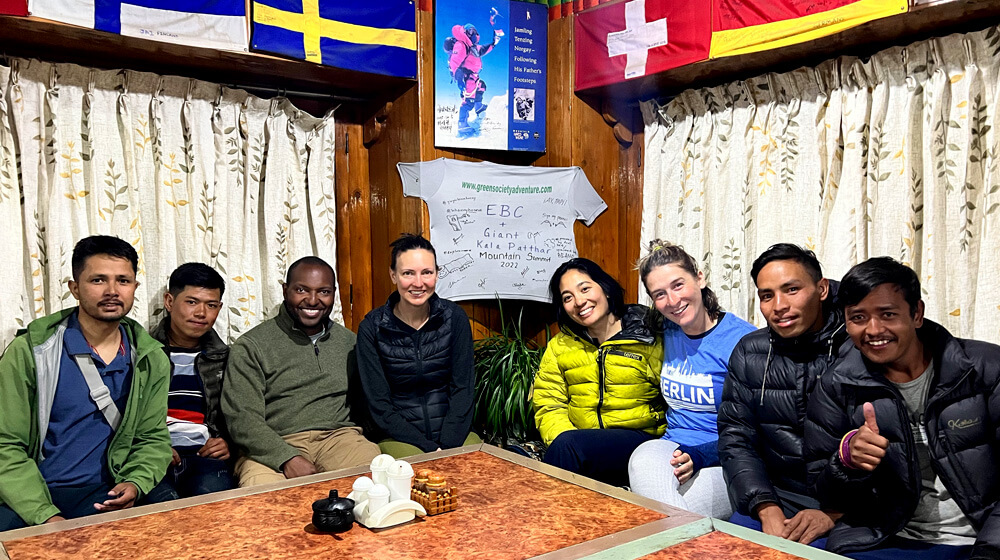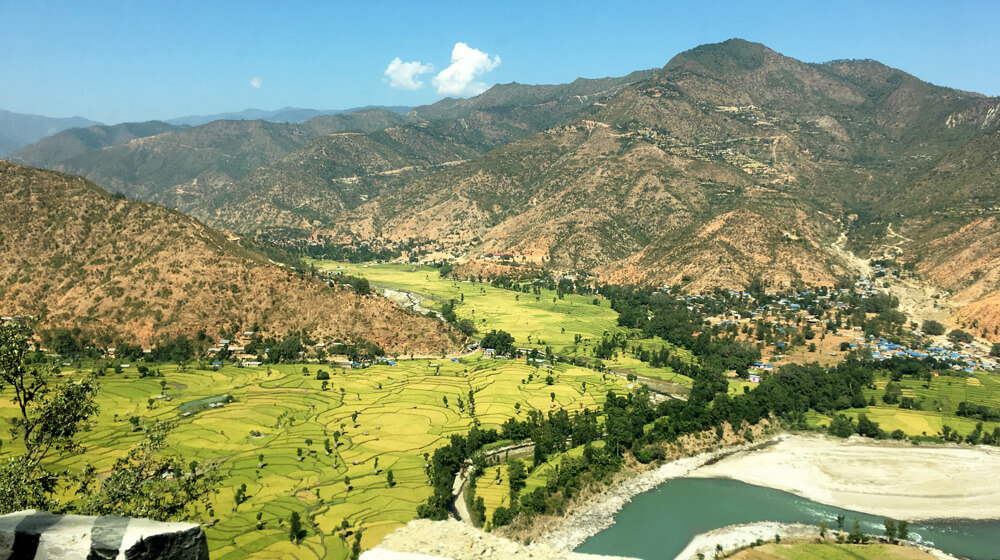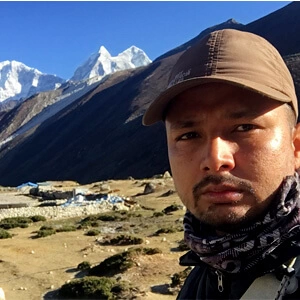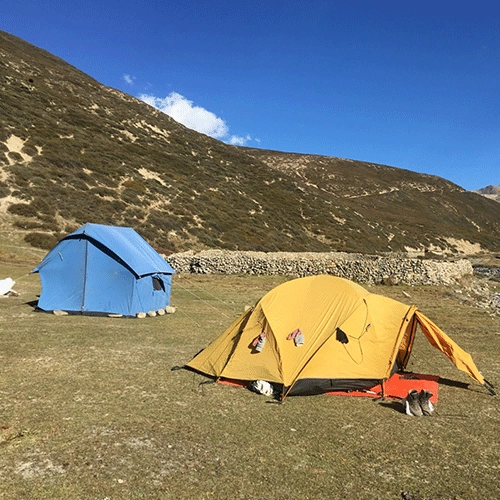Nepal is truly a wonderful country that beckons travelers from around the world. Whether you're seeking the thrill of Himalayan exploration or simply looking for a relaxing getaway, Nepal offers a wealth of opportunities for tourism. One of its standout qualities is its warm and hospitable reception to travelers of all backgrounds. Our budget and backpacker's travel tips to Nepal are designed to assist you in making your journey to this beautiful country both more convenient and cost-effective.
Budget & Backpackers Travel tips to Nepal
Table of Contents
Budget Traveling in Nepal
Nepal is not just a destination for high-spending tourists; it also warmly welcomes backpackers looking to explore Nepal on a low budget. The friendly nature of the people, coupled with affordable accommodation and essential services, makes this country an ideal and enjoyable choice for budget-conscious travelers.
Backpacking is not an easy way of traveling. Traveling with a limited budget can be demanding, and venturing into the unknown without essential information can be risky. That's why all backpackers need access to guides and tips that can help them navigate potential obstacles during their journey.
Understanding the basic and necessary expenses, as well as identifying avoidable costs, is crucial. Fortunately, Nepal is both a safe and cost-effective destination for travel. Offering a wide range of options at various price points, Nepal is undeniably the perfect choice for budget-conscious travelers.
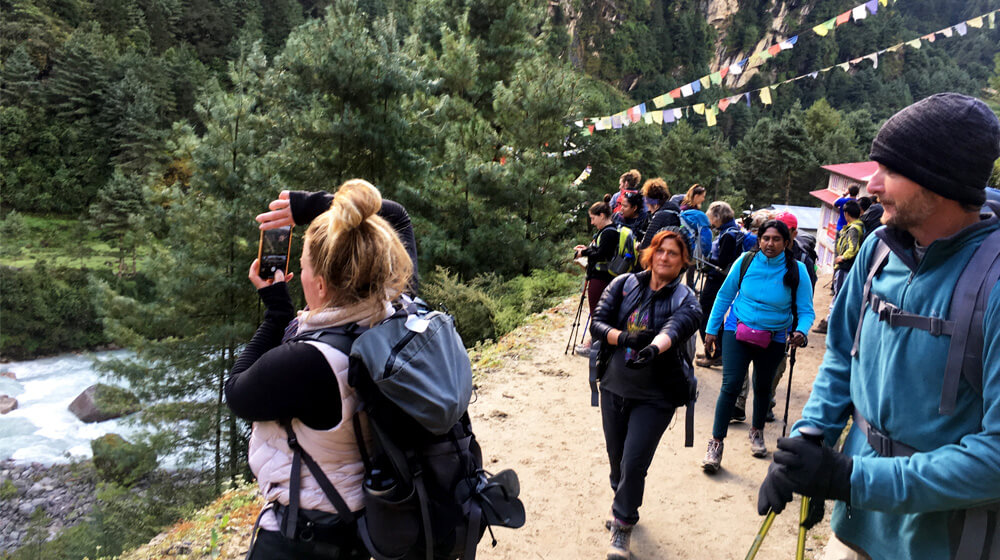
Arrival in Nepal
Upon your initial arrival in Kathmandu, you'll land at Tribhuvan International Airport, the sole international airport in Nepal. If you haven't obtained a prior visa for Nepal, you can conveniently obtain a "visa upon arrival" at the airport. The visa fees are as follows: $25 for a 15-day stay, $40 for a 30-day stay, and $100 for a 90-day stay.
After you land and check out from the airport, you have a couple of options for reaching your hotel or guesthouse. You can either hail a taxi or, if you've made prior arrangements with a travel agency, their airport representative will be on hand to welcome you and assist with your transfer.
Once you've reached the city, you may require local currency for dining and shopping. Fortunately, foreign exchange booths are readily available in the Thamel area. ATMs are also an option but keep in mind that some banks may charge a fee of NRs. 500 per transaction.
Additionally, you might want to acquire a SIM card for making calls or accessing the internet during your stay. Inside the airport, you'll find SIM card stores where you can register a card in your name by providing a passport photo and some identification. The initial cost for registering a SIM card is NRs. 100, after which you can top up your balance as needed.
Living Costs in Nepal
Your next priority is finding an affordable yet comfortable place to stay. You can explore a variety of options and their respective prices online or reach out to local travel agents for assistance.
Keep in mind that not all hotels and lodges have an online presence, especially the budget-friendly ones. So, it's often wise to contact local travel companies or seek recommendations from locals after your arrival.
When it comes to dining, Nepal offers a wide array of restaurants. You'll find common dishes such as MoMo (dumplings), noodles, and the traditional Dal Bhat set, along with various continental options. If you opt for a local restaurant, a meal typically costs around NRs. 150 or more.
Many backpackers choose the Dal Bhat set, a hearty combination of rice, lentils, vegetables, and optional meat curry. Two servings of Dal Bhat can keep you fueled for 24 hours, hence the saying, "Dal Bhat power, 24 hours." Expect to pay around NRs. 350 ($3) or more for a typical set. While the city offers a range of restaurants with international cuisines, dining at these establishments tends to be more expensive.
For cost-effective travel within the city, consider using public transportation like buses and micro vans, in addition to taxis. Public transportation fares usually range from NRs. 25 to 50 per ride. You can ask locals for guidance on which bus to take to reach your destination. This option is significantly cheaper than relying on taxis, which can cost you upwards of NRs. 300 per ride.
If you're a solo traveler, you can also explore ride-sharing services like InDriver or Pathao, which are more economical than traditional taxis but slightly pricier than local transport. To use these services, simply download the app and create an account.
Cost of Touring Around Cities
While you're in Kathmandu, you may want to explore beautiful places around Kathmandu Valley. There are a total of ten UNESCO World Heritage sites in Nepal, out of which seven are located inside Kathmandu Valley. And normally you need one to three days to tour around heritage sites in Kathmandu. Each site will charge you its entrance fee. The entrance fees start from NPR 250 to 1500 ($3 to $14).
On a global scale, these entrance fees are not so high compared to other countries. But when you are traveling to Nepal on a budget, every penny you spend counts. You can cut costs by traveling to these sites on the bus. Make sure you have a map with you, so you know where to go and what to see.
Next, you may want to visit other cities in Nepal. Traveling by road is always cheaper than flight. You can easily get a bus ticket that takes you to the city of your choice. Bus ticket prices are around NRs. 800 to 2500 ($7 to $22), depending on the destination and the type of bus. Some of the most popular cities to visit are Pokhara, Chitwan, Lumbini, etc.
Pokhara: Pokhara City, nestled in the picturesque Annapurna Himalayan range, is renowned for its breathtaking mountain views, serene lakes, and vibrant atmosphere. Pokhara is a popular destination for nature enthusiasts and trekkers alike. Living and tour costs in Pokhara range from $25 to $85, depending on the accommodation/ food stander you choose and mode of transportation.
Key Places to Visit: Mountain Museum, World Peace Pagoda, Sarangkot, Gupteshower Cave, Phewa Lake, Bagnas Lake, David Fall, Bat Cave, Pumdikot Shiva Temple, and many others.
Chitwan: Chitwan National Park, located in Nepal's subtropical lowlands, is a UNESCO World Heritage Site and its rich biodiversity, one-horned rhinoceroses, tigers, elephants, and diverse bird species. The park is also home to the indigenous Tharu people, known for their unique culture and deep connection to the natural environment. The budget cost for living and touring around the National Park can cost $65 to $130 Per day.
Major attractions: Wildlife Safari by Jeep, Elephant safari tour, Tharu Cultural show.
Lumbini: Lumbini, located in the Rupandehi District of Nepal, is a UNESCO World Heritage Site and one of the holiest places for Buddhists worldwide. It is renowned as the birthplace of Siddhartha Gautama, who later became known as Buddha. Lumbini is a pilgrimage destination with numerous monasteries, temples, and historical sites, including the Maya Devi Temple, which marks the exact spot where Buddha is believed to have been born.
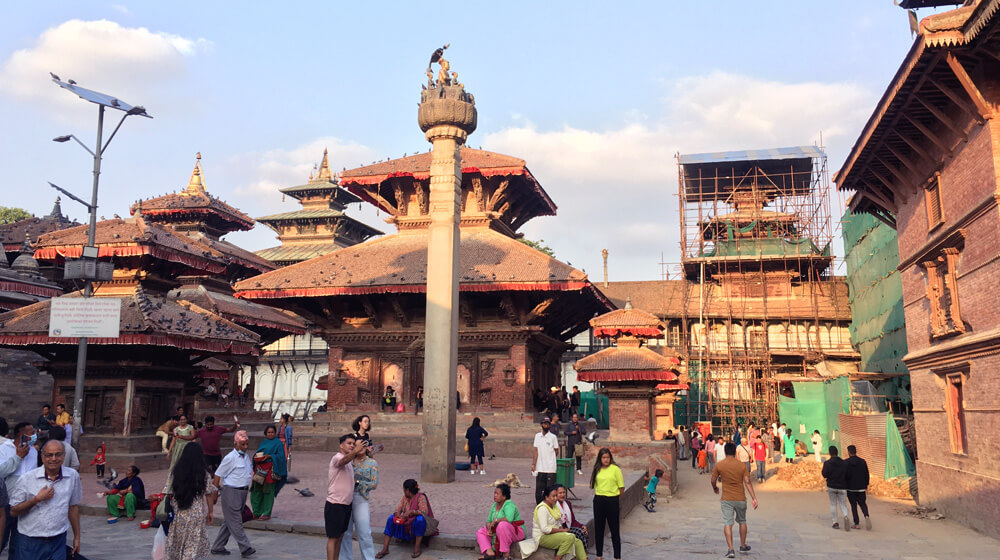
Trekking and hiking costs in Nepal
One of the major attractions of Nepal is the Himalayas and most people visit this country to witness the surreal beauty of the mountains. Certainly, backpackers also want to experience the beauty of trekking in the Himalayas. Everest and Annapurna Himalayan region are the most popular trekking routes in Nepal.
For Trekking in Nepal, you can either sign up with a tour operator or simply choose to trek alone. The advantage of traveling with a tour operator is that you do not have to worry about arranging accommodation, food, getting an entry permit, or getting lost in the wild.
On the other hand, the benefit of traveling alone is the money you save. But if you choose to travel alone, you must pay all the fees and permit charges yourself at the respective places. While doing so, some may feel lost not knowing where to go or what to do.
By trekking alone, you save money as you do not hire guides, but if you are trekking in Nepal for the first time, it is highly recommended that you at least hire a guide. With a guide, you get familiar with the system and the dos and don'ts so that next time you’re trekking in the Himalayas, you can do things on your own.
Permits and entrance fees can be expensive, make sure you know the costs beforehand. If you cannot pay the charges, you can opt for short hikes or treks that do not include any permits. Some of the most popular options to do so are Nagarkot, Dhulikhel, Sarangkot, Dhampus, etc.
Lastly, if you choose to trek alone you must know the details of the routes. You must have intermediate experience of trekking if you want to trek alone in the Himalayas. Before you go for your trek alone, make sure someone knows about your plans and your schedule.
Additionally, get your travel insurance which can cover trekking and high-altitude travel. In the event of an emergency, medical services can suffer substantial expenses in such remote regions.
Here are some popular budget-friendly trekking trips that we offer. Choose the one that can suit your needs and contact us for detailed information.
- Everest Base Camp Budget Trek: Embarking on an 11-day journey to the base camp of the world's highest mountain offers an awe-inspiring experience. This trek can range in cost from $860 to $1230, depending on your choice of accommodation and additional services. The Everest trek not only provides you with mesmerizing vistas of towering peaks but also immerses you in the rich Sherpa culture and way of life, making it an unforgettable adventure. Along the way, you'll have opportunities to interact with local communities, visit monasteries, and witness the incredible natural beauty of the Everest region.
- Annapurna Base Camp Short Trek: If you're looking for a shorter yet rewarding hike in the Annapurna region, the 7-day Trek to Annapurna Base Camp is an excellent choice. This trek provides a glimpse into the stunning landscapes and the local way of life in the Annapurna region. The cost for this trip can vary, typically ranging from $460 to $690, depending on your preferences for accommodation, transportation, and services. Along the journey, you'll be captivated by the beauty of the Annapurna Sanctuary and have the opportunity to immerse yourself in the cultural richness of the Gurung and Magar People.
- Poon Hill Trek: For a quick but spectacular mountain experience, consider the 4-day Poon Hill trek. This trek offers breathtaking views of the Annapurna and Dhaulagiri Himalayan ranges and a mesmerizing sunrise spectacle from Poon Hill. Starting and ending in Pokhara, this trip is accessible and usually costs between $300 to $490. It's an ideal choice for travelers with limited time who still want to witness the grandeur of Nepal's mountains and enjoy a sunrise that will leave you fascinated.

Reducing Expenses Wisely
- There are many ways to cut your expenses if you're open to it. Consider sharing rooms with fellow backpackers, which can reduce your accommodation costs. Don't hesitate to socialize and inquire about affordable low-end hotels or teahouses rather than pricier options.
- Medical expenses for foreigners in Nepal can be quite steep. Buy travel insurance to safeguard yourself against unexpected medical expenses or emergencies.
- Bargaining can often land you a better deal in urban areas, but exercise restraint and avoid bargaining in rural areas.
- When it comes to your health and safety, don't cut corners. If you feel uneasy about traveling solo, invest a bit in hiring a guide.
- Use public transportation or shared taxis instead of private cabs. Local buses, ride-sharing, and rickshaws can be excellent cost-saving options.
- Plan your expenses ahead of time and avoid unnecessary spending wherever possible.
By employing these cost-cutting approaches, you can enjoy a budget-friendly trip while exploring the beauty of Nepal.
Conclusion
In conclusion, the budget needed for your trip to Nepal largely depends on your intended activities. If your goal is to unwind and explore only the cities, a daily budget of $25-55 should suffice.
However, if you're planning on trekking, your expenses might be slightly higher. On average, a budget trekker can expect to spend around $30-$45 per day, not including permit or entrance fees. It's essential to be well-prepared and particularly plan your trip to ensure a smooth and enjoyable travel experience.

